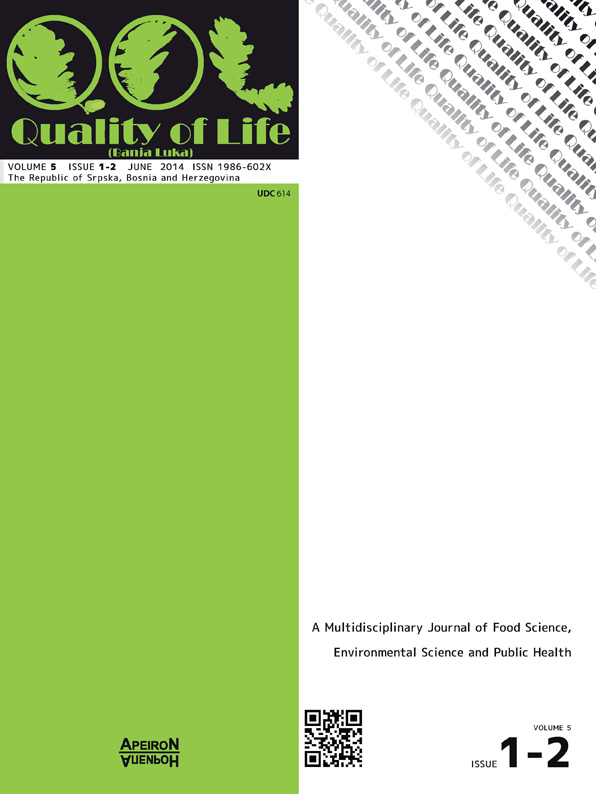Predicting Ballistic Strength of Life-Saving Aramid Fiber Composites For Personal Protection
DOI:
https://doi.org/10.7251/QOL1401033DAbstract
Abstract: The purpose of the study is to access the applicability of full factorial experimental design in predicting ballistic strength of aramid fiber/phenolic ballistic composites for personal protection. When designing ballistic composites, two major factors are the most important: the ballistic strength and the weight of the protection. The ultimate target is to achieve the required ballistic strength with the lowest possible weight of the protection. The hard ballistic aramid/phenolic composites were made by the open mold high pressure, high-temperature compression of prepreg made of plain woven aramid fiber fabric and polyvinyl butyral modified phenolic resin. The preparation of the composites was conducted by applying 22 full factorial experimental design. The areal weight of composites was taken to be the first factor and the second – fiber/resin ratio. For the first factor, low and high levels are chosen to be 2 kg/m2 and 9 kg/m2, respectively and for the second factor – 80/20 and 50/50, respectively. The first-order linear model to approximate the response, i.e. the ballistic strength of the composites within the study domain (2 – 9) kg/m2 x (80/20 – 50/50) ratio was used. The influence of each individual factor to the response function is established, as well as the interaction of both factors. It was found that the estimated first-degree regression equation with interaction gives a very good approximation of the experimental results of the ballistic strength of composites within the study domain.Downloads
Published
2014-06-23
Issue
Section
Чланци
